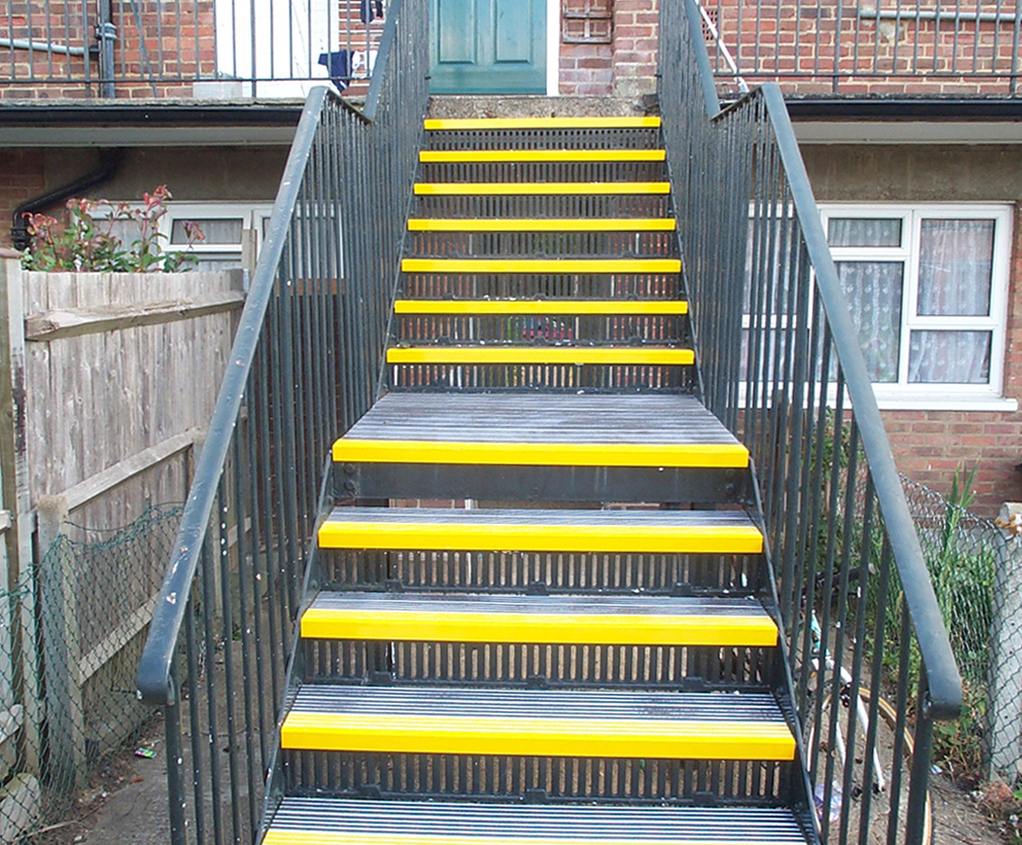Almost Fell Again: Why Historic Places Need Accessibility Features
By Ms.Chelle
@Chellezhere (5770)
United States
July 19, 2024 9:16am CST
Navigating this world with vision loss can be challenging, especially when stores lack the contrast and tactile properties of anti-slip and other tactile paint or tape, creating challenges for people with vision loss. Uneven surfaces and low visibility can be hazardous, on any level, but especially in basements like those found in historic buildings. Without tactile tape or paint to alert us to obstacles like low visibility or uneven surfaces, we cannot see natural features, like curbs, handrails, or steps.
It isn't a matter of "if" you or a loved one fall. It is a matter of "when." Unmarked basement steps, especially those just inside the entrance, pose a serious fall risk for everyone - not just those with blindness, visual impairment, or mobility challenges. When falls occur, a broken bone or worse could be the consequence, and you or your loved one could end up hospitalized for weeks!
And I get that many historic districts have guidelines or regulations set by local preservation boards or commissions that may dictate modifications. Preserving history is important, but safety comes first. Businesses must comply with and meet accessibility codes and standards under the Americans with Disabilities Act (ADA) or local accessibility codes to ensure everyone can navigate safely.
The good news is that there are solutions, so safety and historic preservation can go hand in hand to accommodate the needs of inside and outside customers (i.e., employees and guests) while protecting the appearance or integrity of historic structures! To meet accessibility guidelines, some preservation boards and commissions suggest alternative methods or materials that blend better with the historic aesthetics while meeting accessibility requirements.
While we all take risks, everyone deserves to feel safe entering and leaving a business. This is why safety should be a top priority for businesses. I have slid down unmarked steps more than once and almost fallen while trying to access and egress businesses - which could have damaged one of my artificial knees (or worse, given that I am also legally blind).
Have you or any of your loved ones encountered similar navigation challenges while shopping or eating in public places? Share your or your loved one's story in the comments and share this post to raise awareness about the importance of anti-slip tactile tape in public spaces, and let's work together to make businesses take that action!
How else can we make historic places more accessible while preserving their character?
#AccessibilityAwareness #InclusiveDesign #BlindnessAwareness #DisabilityRights #ADAcompliant #MakeADifference
3 people like this
2 responses
@Chellezhere (5770)
• United States
19 Jul
There is so much to do with blindness that England always seems to be ahead of the game about.
1 person likes this
@Ronrybs (20185)
• London, England
20 Jul
@Chellezhere Left over from when we were part of the European Union and proving fairly popular. No Government is really keen to get into a fight to reduce commitment
1 person likes this
@Chellezhere (5770)
• United States
20 Jul
@Ronrybs Still, I've found better blindness information on English and Scottish websites than anywhere else. A Scottish one is the one that recommends wearing golfing, instead of traditional winter gloves when using a long white cane during colder months.
1 person likes this

@LindaOHio (185098)
• United States
20 Jul
There is a lot still to be done not only for the blind but for the mobility impaired. Have a good weekend.
1 person likes this
@Chellezhere (5770)
• United States
20 Jul
Yes, there is, but whereas many businesses think about people in wheelchairs, or who use walkers, most don't think about people who live (and shop) with vision loss. Ramps work for them, but if they are not marked, a blind or visually impaired person could fall.
1 person likes this
@Chellezhere (5770)
• United States
22 Jul
@LindaOHio It doesn't take much to do a lot for the disabled, but ableists are too blind to see that.
1 person likes this
@LindaOHio (185098)
• United States
21 Jul
@Chellezhere Very true. It takes very little effort to mark a ramp or some steps.
1 person likes this








